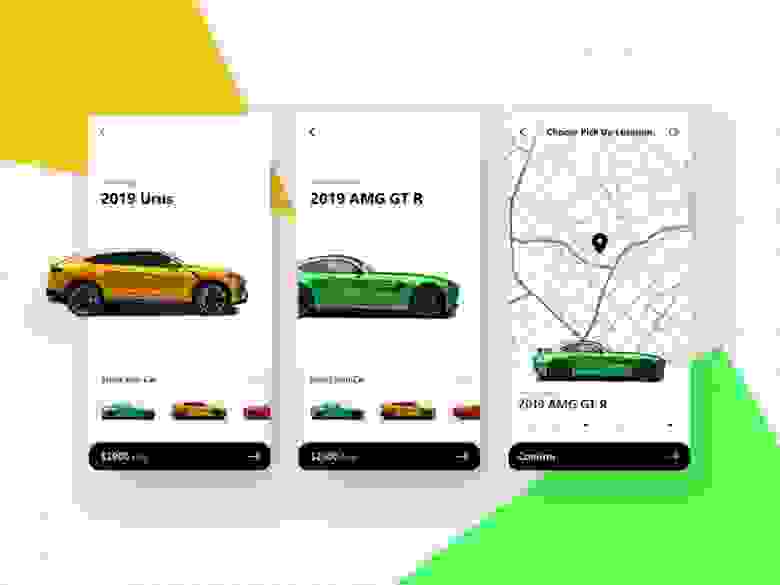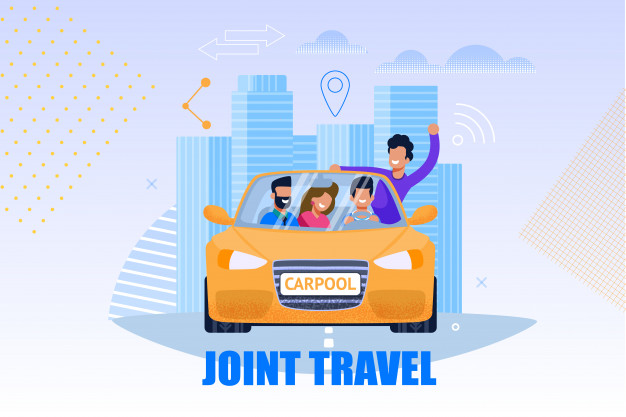Ride hailing что это
Ride hailing что это
Недавно на публичных слушаниях по реформе ОСАГО в Государственной думе была озвучена справедливая стоимость полиса обязательного автострахования для такси. Цифра поразила практически всех — 60 000 рублей в год. Но о чем это говорит? О том, что аварийность в российском такси зашкаливает. Почему? И, главное, что с этим делать?
Для начала надо понять, что сама услуга легкового такси в результате технологического развития теперь представляет из себя микс из трех услуг: непосредственно такси, которое имеет соответствующее разрешение, сервисы «ride-hailing», «кликни и езжай», — в это понятие входят как убер-подобные приложения с водителем, так и привычный москвичам каршеринг, — а также «ride-sharing» сервисы, когда вы являетесь попутчиком.
Дискуссия идет вокруг «ride-hailing» — сервисов такси с водителем, в России их называют «агрегаторами». Вопрос звучит так: ближе ли они по сути к легковому такси, то есть требуют соответствующего лицензирования, или все-таки они более близки к «ride-sharing» сервисам и, значит, не требуют вмешательства государства? В ближайшее время на этот вопрос будет отвечать Апелляционный суд Англии и Уэльса. Но каждая страна должна будет ответить на этот вопрос самостоятельно, если не хочет получить последствия в виде резкого роста аварийности на дорогах.
Логика предыдущих судебных решений в разных странах заключалась в том, что если водитель автомобиля, подключенный к «ride-hailing» сервисам, зарабатывает себе этим на жизнь, то это означает юридическую близость этих сервисов к легковому такси. Водители «ride-sharing» сервисов не зарабатывают себе этим на жизнь, лишь компенсируют стоимость топлива, поэтому и не подлежат государственному регулированию. Сами водители «ride-hailing» сервисов подтверждали, что это именно работа, просто без оформления официальных трудовых отношений, что приводит к чудовищным нарушениям здравого смысла. Например, в Великобритании одним из аргументов против Uber является то, что «водители работают по 80/90 часов в неделю, спят в своих автомобилях, но все равно не зарабатывают минимальный уровень дохода».
В России сложилась та же ситуация. График работы 6 дней по 12 часов (суммарно 72 часа в неделю), без больничных, отпуска и иных социальных гарантий, распространен повсеместно. Работая 40 часов в неделю, водитель не будет зарабатывать ничего. Но на смену графику «6х12» пришел график «сутки через сутки», — так автомобиль используется максимально эффективно. Водитель заступает на суточную смену, после её окончания он передает машину напарнику и идет спать. Проснувшись, он вынужден заступать через несколько часов на новую смену, и так до бесконечности. А в реальности — до тяжелого ДТП, когда проявляются физиологические пределы уставшего организма.
Если «ride-hailing» сервисы будут признаны сервисами такси, то цены на поездки серьезно вырастут — этот аргумент часто приводят сторонники полного дерегулирования отрасли. Но может ли стоимость поездки быть важнее безопасности пассажира, самого водителя, а также других участников дорожного движения? Что можно сделать для того, чтобы соблюсти интересы как сторонников дешевых поездок, так и тех, кто выступает за безопасность дорожного движения? Выход есть.
Решением данной проблемы является перенос разрешения на работу в такси с автомобиля на водителя. Сегодня разрешение выдается на автомобиль, и делается это крайне неэффективно. Например, в Excel ведутся реестры разрешений в 63 регионах Российской Федерации, а 8 реестров вообще имеют формат, который не может быть прочитан автоматизированным способом. Выдача разрешения на автомобиль приводит не только к тому, что любой желающий может сесть за руль и возить пассажиров, но и к появлению прослойки посредников, сдающих автомобили, имеющие разрешения для работы в такси, в аренду всем подряд. То есть никакого смысла в ведении подобных реестров нет. Очевидно, что на безопасность дорожного движения реестр транспортных средств никакого влияния не может оказывать в принципе.
Выдача персональных разрешений на перевозку пассажиров в легковом транспорте решит проблему искусственного разделения такси и «ride-hailing» сервисов, так как оба сегмента будут работать непосредственно с субъектами лицензирования — с водителями. В результате переноса лицензирования на водителя и такси, и «ride-hailing» сольются в один большой сегмент: городских перевозчиков пассажиров.
У подобной реформы есть еще ряд плюсов:
Водитель является не только лицензиатом, но и субъектом налогообложения, что позволит нормализовать вопрос с «самозанятыми» водителями.
Становится возможным контролировать режим труда и отдыха с помощью автоматизированных средств, таких как персональный тахограф.
К водителям можно предъявлять дополнительные квалификационные требования, исключающие попадание за руль тех, кто находится в группе риска.
Прямые взаимоотношения между сервисами по заказу такси и исполнителями этих заказов устранит целую прослойку посредников, которые сейчас резко снижают заработок в этом сегменте.
Появляется возможность страхования в реальном времени как пассажиров и водителя, так и гражданской ответственности.
Подобная реформа оздоровит рынок пассажирских перевозок в России, увеличит безопасность на дорогах и предоставит дополнительные социальные гарантии водителям, которые сейчас представляют собой что-то вроде биороботов, работающих за еду. Будет ликвидирован и искусственный разрыв между «ride-hailing» сервисами («агрегаторами») и службами заказа легкового такси, — это будет единый организм. Компании «ride-sharing», организующие совместные поездки, не пострадают. Цены на поездки вырастут незначительно — за счет ухода с рынка целого конгломерата посредников между клиентом и водителем. Дело теперь осталось за малым: чтобы эту идею услышали депутаты Государственной думы. Об этом сообщает
Основатель Gett Дэйв Вайсер: Молодые люди не хотят ничем владеть, они хотят пользоваться сервисами
Водительские права и навык управления автомобилем скоро станут не нужны: доступность сервисов каршеринга заставляет потребителей задуматься о нецелесообразности покупки и содержания автомобиля, а по дорогам того и гляди поедут беспилотники. Глава Gett Шахар Вайсер выступил на московской конференции Techsummit и рассказал, как каршеринг и беспилотные автомобили изменят облик городов, почему автопроизводители станут сервисными компаниями и как авто превратится в платформу потребления контента. Inc. записал самое интересное из его выступления.
На рынке автоперевозок сегодня происходят, наверно, самые масштабные изменения за последние 100 лет. Для людей, которые занимаются бизнесом, невероятно интересно наблюдать за изменениями такого масштаба на таком огромном рынке.
Человечество сегодня проезжает на машинах примерно 10 трлн миль в год. В общей сложности на дорогах около 1 млрд машин, и, в среднем, каждая делает по 10 тыс. миль в год. Личные автомобили используются очень неэффективно — около 4% времени, или всего час в течение суток. В среднем, в машине находятся 1,3 человека, а значит, она используется всего на 25%.
Для любой компании, которая использует эти железки, чтобы развозить людей, эффективность автомобиля скоро станет ключевым фактором. Не стоимость автомобиля, как сегодня, а именно эффективность его использования.
Как шеринг и ride-hailing меняет авторынок
Пока люди не пользуются ride-hailing (услуги агрегаторов, например, Uber, Gett или Яндекс.Такси, а также каршеринг — Inc.) так же активно, как собственным автомобилем. На практике в 2016 году всего около 5% миль пришлось на долю каршеринга и такси. Это означает, что 95% процентов расстояния проехали машины, которыми люди владеют. Интересно, что 10 трлн миль — это константа, а доля ride-hailing растет в 2-2,5 раза в год.
Молодежь сегодня переключается на новую модель: она не хочет владеть ничем, в том числе автомобилем. Динамика такова, что люди, которым сейчас от 20 до 30 лет, не собираются покупать машину и позже получают права, а те, у кого уже есть машина, не собираются менять ее на новую.
Первыми сдвиг ощутили компании, которые сдают автомобили в аренду. У них полностью умер короткий рынок. Производители машин пока не чувствуют этот сдвиг, но ощутят его через 2-3 года. Они могут начать зарабатывать со своих активов в несколько раз больше, чем сегодня, если станут сервисными компаниями и будут продавать не автомобили, а мили или поездки.
Сейчас продажа сервиса — гораздо более перспективная бизнес-модель, чем классический ретейл. А еще больше ситуация изменится с появлением на рынке доступных беспилотников.
Райдшеринг и такси: в чем разница?
За последние семь лет благодаря Uber и прочим компаниям появились не только новые способы перемещения по городу, но и соответствующая терминология. Теперь мы пользуемся не только такси, но и «райдшерингом». Разница между этими двумя терминами размылась и часто их заменяют друг другом. Однако между райдшеринговыми компаниями и сервисами такси все-таки есть существенные различия.
Что такое «такси»
Суть такси заключается в том, что клиент может нанять водителя, чтобы тот довез его в нужное место. Такси можно поймать на улице, вызвать по телефону или заказать через приложение.
Что такое «райдшеринг»
Суть райдшеринга в том, что вы можете разделить поездку с другим пассажиром. Некоторые любители такого сервиса утверждают, что пользуются им не только чтобы экономить средства на топливо, а ради «социальной миссии — защиты окружающей среды и улучшения мобильности».
К чему относятся Uber и Lyft?
Uber и Lyft можно считать такси, но есть некоторые нюансы.
Это райдшеринг: настоящий сервис такого типа скорее позволяет людям подвозить друг друга. Подобные услуги появились и у Uber и Lyft. Еще один момент — сами компании используют на своих сайтах слово «райдшеринг». Фактически эти две фирмы создали целую индустрию, так что с их самоименованием трудно спорить.
А что насчет BlaBlaCar?
BlaBlaCar помогает найти друг друга водителям и людям, отправляющийся в дальнюю поездку. Если у вас есть свободное место в машине, вы можете взять попутчика, который покроет часть расходов на топливо. Этим сервисом пользуются обычные люди, а не профессиональные водители, поэтому они ничего не зарабатывают на BlaBlaCar — просто получают возможность немного сэкономить. За пять лет своего существования сервис приобрел огромную популярность — каждый квартал с его помощью совершается 10 миллионов поездок.
Фактически эта компания занимается райдшерингом в истинном значении этого термина.
Top profitable ride-hailing business models implemented by growing Uber like taxi apps
There was a time when moving from one place to another was a matter of utility. People did not Care About Us lyrics like comfort. Public transportation was dominating the landscape of movement and private transport was considered a luxury.
Today, we live in a world where people expect more than just the movement. They do not want to compromise on the aspects of comfort and convenience. They would like to be picked up from their doorstep and they would like to be dropped precisely in the place that they want to be.
These transformations have given rise to the business of ride-hailing. There are a lot of companies that provide the service of transportation by picking people from one place and dropping them in a place of their choice.
The constructive onslaught of Smartphones enabled with GPS made the business of ride-hailing efficient, profitable and delightful to the customer.
The Promising Projections & The Massive Markets
Regional players like Ola, Grab, Didi Chuxing and Careem have also tasted success parallel to Uber, and sometimes trumping the big U. This has only ascertained the fact that there is a market that is wide and still open to Uber-like apps. Developing a ride-hailing app has become easy with ready-made app solutions and the expert taxi app development companies.
The floodgates to on-demand businesses have been opened because of cab booking services. The cab services follow different business models. Let us look at a few different aspects of these business models.
The Classic (Or Maybe Not!) Business Model
Sharing Economy
In the year 2002, the sharing economy was discussed as a concept at Harvard. a lot of companies it not this business model but not uber. It had created a promising segment of the economy just by following this model. To this day, the skeleton of Uber business model remains the same.
Surge Pricing
This is one of the most controversial features of Uber and been infamously replicated by most of the Uber clone apps. However, given the fact that the primary utility of the app is to provide safe transportation, surge pricing can be considered an important and relevant feature. It is not as unidirectional as it is thought to be. It takes into consideration a multitude of factors like weather, local events, traffic, demand, and booking patterns.
Open-To-All Model
It does not take a lot to be an Uber driver. Uber allows anyone to be a driver by just registering and submitting a verification by the local police. On the surface, it might seem like Uber has employed a lot of people. However, it is precisely where Uber cracked the code of profit. The drivers are responsible for the car and the maintenance. They function more like a contractor who gets played on a commission basis. In this way, uber avoids all the applications of employing such a massive number of people.
This again has changed the perception of running a business. It has given rise to the notion that you do not have to own the services that you provide. You just need to own (or at least, have access to) the information about the people who provide the service!
What More Can You Do?
Uber is to on-demand location-based services is like how Newton’s law was to put a man on the moon. The basic equation that governs the business has been unlocked by Uber. The only limits for the possibilities is imagination and the limitation in execution. Even within the realm of transport, there are a lot of possibilities that can use the framework of Uber.
Shuttle services
Services like Urbvan and Shuttl have used this business model. They understand that there is a need for people to commute from their homes to their offices at specific times of the day. They also understand that there is some pattern in the concentration of homes and offices of people who are likely to avail of this service. In addition to that, they also have a good idea of the requirements of comfort and convenience.
This has resulted in the creation of vans that provide comfortable and punctual transportation to people who commute on a daily basis. Additional services like Wi-Fi and safety serve as attractive garnishes to these shuttle services.
Luxury Transportation
There was a time when taxis where luxury. They would be available only in the airport. Today, when cabs have become mainstream, there is a need for some other mode of transport to fill that space of luxury. This is where companies like Wheely in the UK have fit themselves in.
Conveniences like advance booking, the holding of placards and the chauffeur-driven experience give it a luxurious feeling to the customers who want more than just a comfortable ride from the airport to their place of stay.
Ride-Sharing
There are some people who have retained their passion for driving amid the availability of the conveniences. Sometimes, they might move from one city to another with just them in the car. Some services like BlaBlaCar have capitalized on this crowd and have offered ride-sharing services. Instead of asking people to pay for the service, they present a case where they talk about taking a commission and paying to the original driver for sharing the fuel and wear-and-tear expenses.
The Possibilities of Expansion — The Examples
Using the same business model, there have been companies that have shifted their own version of success stories in different companies.
This startup based out of Cairo in Egypt was founded in 2017 by a team of youngsters who worked with big names like Google, Uber and Quora. Expanding on the services offered by uber, provide a fleet of vans and passes that run between fixed locations and at a fixed time.
It is nothing more than an extension of public transport. However, in a place like Egypt where public transport is not that developed, this service makes a lot of sense. The primary customer target includes corporate employees and women who get an enhanced sense of comfort and security.
Safe Boda
In Uganda, Uber is quite likely to be considered as a costly choice for people. Therefore, three Ugandans, Alistair Sussock, Maxine Dieudonne and Rapa Thomson, created a motorbike taxi service.
Responding to the Government’s concern over safety, Safe Boda pics extreme care in training the drivers. Each driver is provided with an extra helmet with a hairnet for the passenger.
The Relevance of Ready-made app solutions
Instead of investing money and time in building the app from scratch, entrepreneurs can opt to use Uber clone apps that are available in the market.
These Uber clone scripts that are almost ready to be launched as a service. With the customization options, you can incorporate multiple business models and launch your app to perform services specific to a particular market.
Ride hailing что это
Transportation Network Companies (TNCs), like Uber, Lyft, and Via, are often hailed as “the future of public transport” — providing a customized, convenient solution that claims to take cars off the road. Many describe these as ride-sharing or ride-hailing services — using the two terms interchangeably. However, the two are different experiences.
Major TNCs do offer ride-sharing services, like UberPool and Lyft Shared. This enables multiple passengers traveling in the same direction to request a ride and share the same driver to their respective destination(s). On the surface, this appears to be environmentally sustainable.
The concern with the rise of ride-hailing:
Travel surveys consistently reveal that only about 20 percent of TNC trips replace personal car trips. Another 20 percent replace traditional taxi services. The bulk of TNC trips — 60 percent — either replace transit, biking, and walking, or would not have been made without the availability of TNCs.
Schaller’s research means that when those 60 percent of riders switch from transit/biking/walking to TNCs, it actually intensifies congestion and environmental concerns.
Conventional DRT trips are largely ride-hailing as well. What makes TNC trips less expensive?
Demand-response transportation (DRT) modes like paratransit face unique operational challenges, often operating with fixed variables (like scheduled dialysis appointments) and serving customers who may have challenges even entering a vehicle. Amidst these challenges, DRT often operates as ride-hailing services rather than ride-sharing as well. As agencies face increasingly tight budgets and staffing levels, this makes operating DRT more challenging than ever.
To reduce cost, many agencies are reimbursing passenger trips provided by taxi companies and TNCs, as they can be up to 70% less expensive than conventional paratransit.
Passenger fares only cover about 40% of the trip cost; the remaining 60% is investor capital, making the trip artificially less expensive. These trips can be more expensive because both TNCs and DRT operate as ride-hailing. Any additional cost difference between TNCs and paratransit comes from operating smaller, less expensive vehicles, like passenger sedans and vans and many paratransit agencies are adding to their fleet, as well.
While TNCs may provide your passengers a fashionable user experience (through an app), many drivers do not have the same kind of professional training to serve elderly and disabled passengers as paratransit drivers. In this way, paratransit and TNCs can coexist and even partner because paratransit services can fill a need for some of the common customers of both.
Ecolane transforms agencies from ride-hailing to ride-sharing providers
How do we reduce costs, decrease our carbon footprint, and provide a superior customer experience for our passengers? Operate a service that is truly ride-sharing.
Most scheduling algorithms aren’t sophisticated enough to perform this, especially amidst the variables that accompany service to vulnerable populations. Modernizing with a next-generation scheduling software ensures these services actually function as ride-sharing services. This is why rural systems like Perry County, PA were able to reduce fuel costs by 40%, and urban systems like Arlington, TX were able to increase their number of rides per hour by 44%.
Serving a New Generation in the 21st Century
Remarkably, a next-generation scheduling software can turn ride-hailing providers into ride-sharing providers, all while delivering a better experience for our most vulnerable passengers.
As 10,000 people turn 65 every single day in the United States, they have heightened expectations thanks to Amazon and Uber for how to receive services (through an app) and when to receive services (promptly). Ecolane offers your customers the ability to schedule rides anywhere, 24/7 through a new Mobile App.
The riding experience doesn’t just get easier for your customers; it gets prompter too. After Link Transit upgraded to a next-generation scheduling software, their on-time performance reached 96% over the last five years.
Link Transit General Manager Richard Derock smiles as he exclaims, “Most months, I get two to three times as many compliments on the service as complaints.”
Ride-hailing and ride-sharing are part of a rapidly developing new infrastructure of mobility. Explore the the cutting-edge by checking out our in-depth guide on the future transportation landscape.
About the Author

RELATED NEWS
Increasing Transit Ridership through Effective Communication
Transits number one priority is always safety. A driver’s goal is to safely deliver passengers from.
4 Tips For Transit Agencies To Help Curb Ridership Loss
The ridership numbers in public transit has been decreasing recently for a variety of reasons.
Are Paratransit Partnerships with Taxi/Ride Sharing Companies Viable?
Have you heard? Some local transit agencies are partnering with taxi and other ride sharing.
















